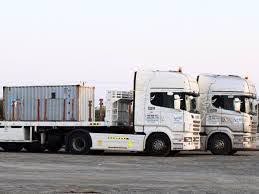Red Hat Enterprise Linux 9 Beta Is Out – Here’s What’s New

If you’ve been waiting with bated breath to see what Red Hat will do with its enterprise Linux offering, your time has come. Today, the company officially announced the availability of the beta release of Red Hat Enterprise Linux 9 (RHEL9). So what’s new in RHEL9? Let’s take a look at some of the highlights in this overview of the newest version of this popular enterprise operating system.
Why RHEL9
Red Hat Enterprise Linux 9 is the latest release of the world’s leading enterprise Linux platform. RHEL9 brings many new features and improvements, including a redesigned system installer with a focus on ease-of-use and accessibility for first time system administrators, long term support for IBM Power Systems running IBM AIX 7.1 TR6 or later, KVM virtualization on IBM z Systems, UEFI boot support for Intel 64-bit (x86_64) architecture computers with UEFI firmware interface version 2.3 or later, Ksplice kernel updates which can be installed without a reboot after installation with yum update ksplice , and more!
Installation Section
To get started with the Red Hat Enterprise Linux 9 Beta, you’ll first need to download the ISO image. Once you have the image, you can burn it to a disc or create a bootable USB drive. If you choose to go the USB route, you’ll need a minimum of 4GB of storage space. Insert your USB stick into your computer and make sure you’re using an up-to-date version of Fedora LiveUSB Creator or another utility that can work with UEFI computers. After connecting your USB device, find out what device name is assigned to it by running the following command: lsblk -f You should see something like /dev/sdb listed as the USB device. In this case, we’ll use /dev/sdb1. Next, type mkdir followed by a directory location on your system. For example: mkdir /mnt/usbstick1/. Then type mount followed by the mount point and file system type. In this case, we’ll use mount /dev/sdb1 /mnt/usbstick1. Finally, run the dd if=imagefile.iso of=/dev/sdb1 bs=4M. That’s all there is to it!
The Power of Docker Containers in RHEL9
Docker containers have long been a popular way to package and deploy applications. With the release of RHEL9, Red Hat is making it easier than ever to use Docker containers on your servers. The new beta includes support for running containers without needing to install any additional software. Plus, the new version of RHEL9 includes improvements to container security and performance. If you’re looking to take your servers to the next level, Docker containers are a great place to start.
An Overview of Security Enhancements in RHEL9
The latest release of Red Hat Enterprise Linux, version 9, contains a number of security enhancements to help protect your servers. One of the most notable changes is the switch to using Linux Security Modules (LSM) for access control. This gives you more granular control over who can access what on your system. In addition, RHEL9 includes improved support for certificate-based authentication and encrypted communications. These features help to keep your data safe and secure, even when using untrusted networks.
Storage Enhancements in RHEL9
One of the most notable changes in RHEL9 is the switch to using ext4 for the root file system. This brings a number of benefits, including better performance and reliability. In addition, storage enhancements in RHEL9 include · The introduction of Logical Volume Manager (LVM) as an interface for volume management. LVM supports RAID 0, 1, 5, 6 and 10 configurations as well as snapshots.
- A new caching framework called Flash cache that accelerates read operations on SSDs with support for caching write operations if there are spare I/O threads available or the data being written doesn’t change frequently.
- An API called zones which enables container-based workloads to run in isolation without affecting other containers or zones on the same host machine while still being managed by Red Hat Enterprise Linux Server hosts through c groups management.








